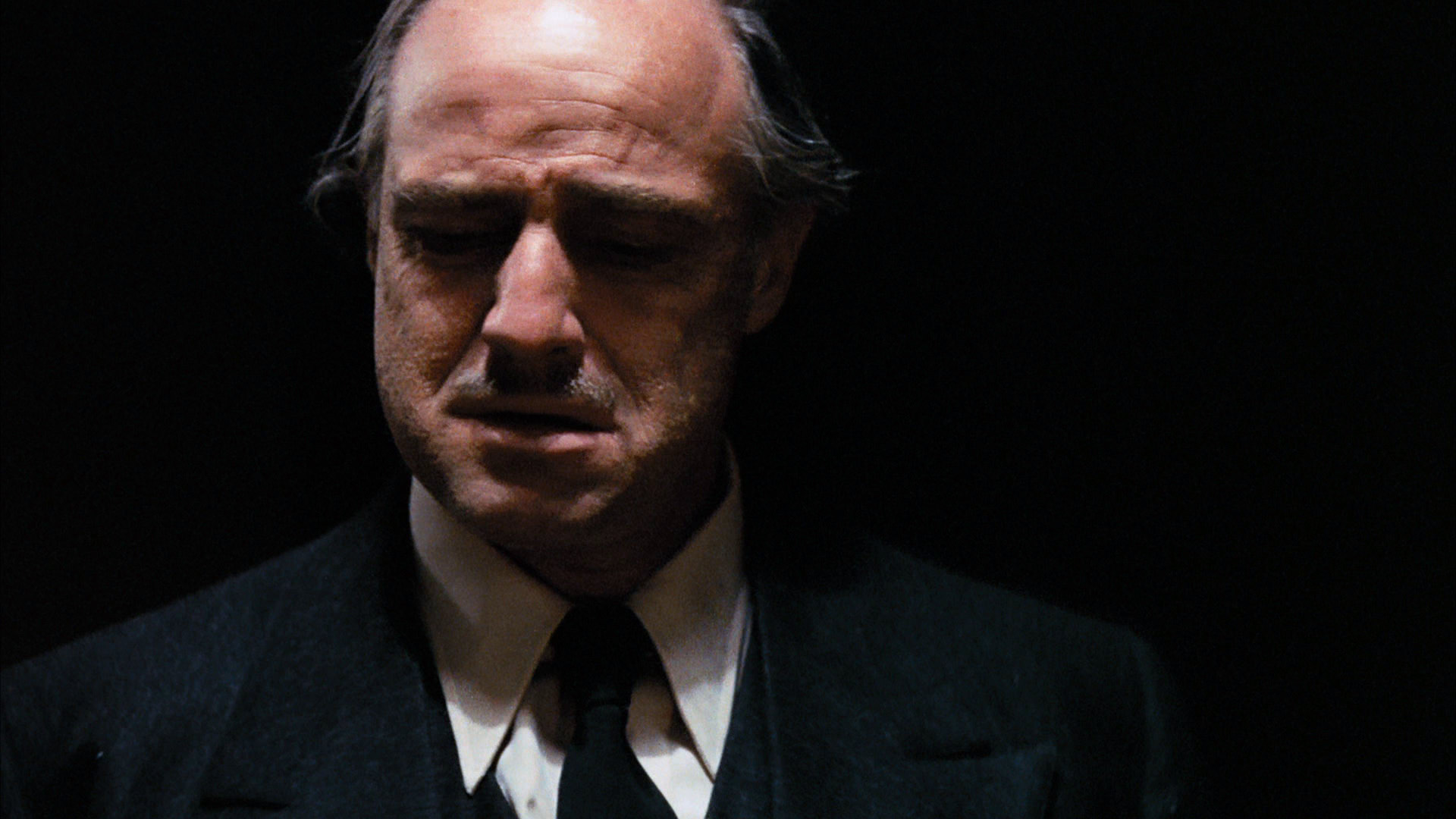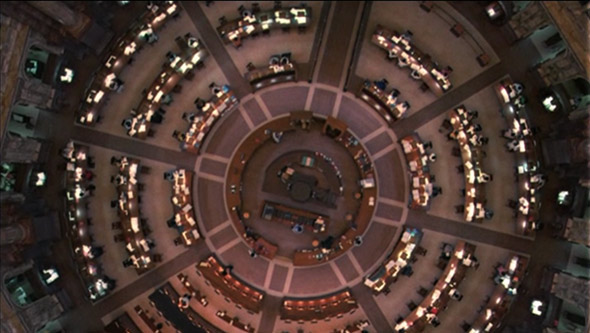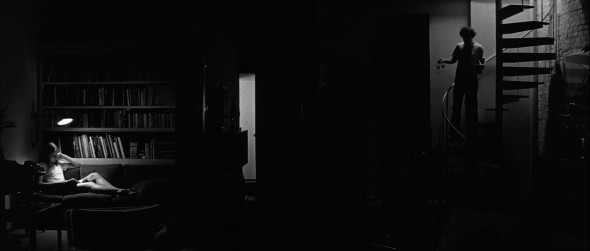Cinematographer Gordon Willis, ASC, was nicknamed the "Prince of Darkness" by fellow director of photography Conrad Hall, who marveled at his braveness in committing shadowy, underexposed images to celluloid — a stylistic choice that flew in the face of decades of conventional Hollywood wisdom and sometimes angered studio bosses. With his passing yesterday, the filmmaking world loses one of the foremost visual artists of cinema's last half-century. To celebrate his achievements over the years, we've collected some quotes from books, magazines, and websites in which Willis discusses his own work — including the challenge of retaining control of his own images — and filmmakers who knew him talk about what his work meant to them.
"The film should be brown and black in feeling, and occasionally hanging on the edge from the standpoint of what you see and what you don't see. A lot of cameramen work to increase the quality of the image, but in this specific case I'm working to decrease it."
— Gordon Willis on The Godfather, American Cinematographer, February 1971
"The whole visual style was set out before we shot one foot of film. We talked about the contrast between good and evil, light and dark. How we'd really use darkness, how we'd start out with a black sheet of paper and paint in the light."
— Francis Ford Coppola on The Godfather, cited by The Guardian in "Gordon Willis Obituary"

The closest that I can think of to what I do visually is what a symphony does. It's really like music — it has different movements. You create a visual style that really is telling a story — you can repeat certain elements, and then you can bring something new in that's unexpected. A perfect example for me of that is from my mentor, Gordon Willis. In The Godfather, every scene is shot at eye level. And then there's that moment when Marlon Brando is in this market and he's about to be shot — and you cut to a high angle that you've never seen in the movie before. You immediately get this sense of dread — something is going to happen. And it's because you've established a visual style that's so solid that when something happens that's different, you go, "Oh, this is different — this is a turning point." If everything is shot from so many different angles, there's no way to create a style that can then be used as a way of telling the story.
— Caleb Deschanel, quoted in Cinematography, by Mike Goodridge and Tim Grierson, Focal Press, 2012
"I like the way the film reacts to hard light. You can create contrast, which draws attention to people and objects. One thing Gordon Willis taught me is that you need to light color film the same as black-and-white film in order to create contrast and brightness, which attracts the eye to certain parts of the frame. If you look at the paintings which inspire us, the classic artists we admire created contrast with highlights and shadows as well as colors."
"Grips and electricians have done more to help me shoot good movies than any other craft."
"We had to start close on Dustin (Hoffman) and (Robert) Redford going through index cards in the Library of Congress, then pull back, going straight up. We put a winch in the dome of the library. It had a cable attached that pulled the camera — an ARRIflex with two gyros attached—upward. There had to be a slight curve in the move, so we also had two tag lines attached to hold the camera over the desk at the beginning. The focus was controlled with a handmade radio remote cannibalized from a model airplane. I figured out what we would see at given distances with lens charts, and it worked. You also have to understand, there was no video to see what was going on. We shot the first one, looked at it, then went back and did it again, with some improvements. It doesn’t seem like much now, but then, it was quite an accomplishment."
Two things happened on Annie Hall. One was that I reached some kind of a personal plateau where I felt I could put the films that I had done in the past behind me. And I wanted to take a step forward toward more realistic and deeper films. The other thing was that I met Gordon Willis. And Gordon was a very important teacher to me, from a technical point of view. He's a technical wizard. He's also a great artist. He showed me things about camera and lighting; it was a real turning point for me in every way. From then on, I really count Annie Hall as the first step toward maturity in some way in making films.
"I don't believe in doing thousands of cuts, then giving it to the editor to make the movie. 'Dump-truck directing' is my reference to that style of moviemaking. You have to know how to cut before you can shoot well. The lack of definition in movies today is appalling. Very few people know how to mount a narrative anymore. If a scene works in one cut, you don't need 10. Or it might need 10. Let's not make it 20."
"On every movie I shot, I maintained strict developing and printing control — everything was printed on one light. In fact, much of the negative on the Godfather films will only work when printed that way. I lit and exposed things at the level I wanted to be perceived on the screen. If you don't do that, anyone can decide what your work is supposed to look like, and I never believed in giving the studios that kind of flexibility. So when making exposures, I based my exposures on the full curve of the film, shoulder to toe. The exposures are right where they should be to achieve a given look on the screen, as long as they're printed as designed. There's no room to move things around on the printer."
"I'm not a great lover of back light. It's pleasing. It's very pretty to look at in conjunction with other things. A girl has pretty hair, you get a back light. It came out of the early days of black-and-white photography in order to separate actors from the background, but then it became an aesthetic tool. I never really used it in black and white, either. When you're shooting in black and white, you're working in values — you're working in black, white and greys. When you separate someone from a background, you're doing it in values — darker background, lighter foreground, or vice-versa. I prefer that. Back light is glitzy and high tech. People love it. They use it on television. It's pretty. Every time I set a back light I hate it. I turn it off unless it's the sole source of illumination, like when an actor moves from a front light into a back light and that's all there is. That's kind of interesting."
— Gordon Willis, quoted in Principal Photography: Interviews with Feature Film Cinematographers by Vincent LoBrutto, 1999, Praeger Publishers
"I don't like blue in movies, especially period movies. I don't even like it in contemporary movies. I think it's a vulgar color on the screen. I don't hate it. I wear it. But I mean that on the screen I don't like it. I think it overwhelms actors and overwhelms the screen."
— Gordon Willis, An AFI Seminar with Gordon Willis, ASC, 1978
“[The Blu-ray version of All the President's Men is] all fucked up. All the medium tones [are wrong] and contrast is way higher than it oughta be. It’s overloaded. All they had to do was use the most recent DVD as a reference, because that’s fine. They probably think they’ll get [me] in there and it’ll turn into a problem, but it’s definitely a problem when they don’t. They don’t get it. They get on those fucking dials … it’s a disease. Their idea for a Blu-ray is to make it for guys who are watching football.”
— Gordon Willis, quoted in "WHV Screwed Up All the President's Men Blu-ray, Says Willis," Hollywood Elsewhere, 2011
Did you enjoy this article? Sign up to receive the StudioDaily Fix eletter containing the latest stories, including news, videos, interviews, reviews and more.




